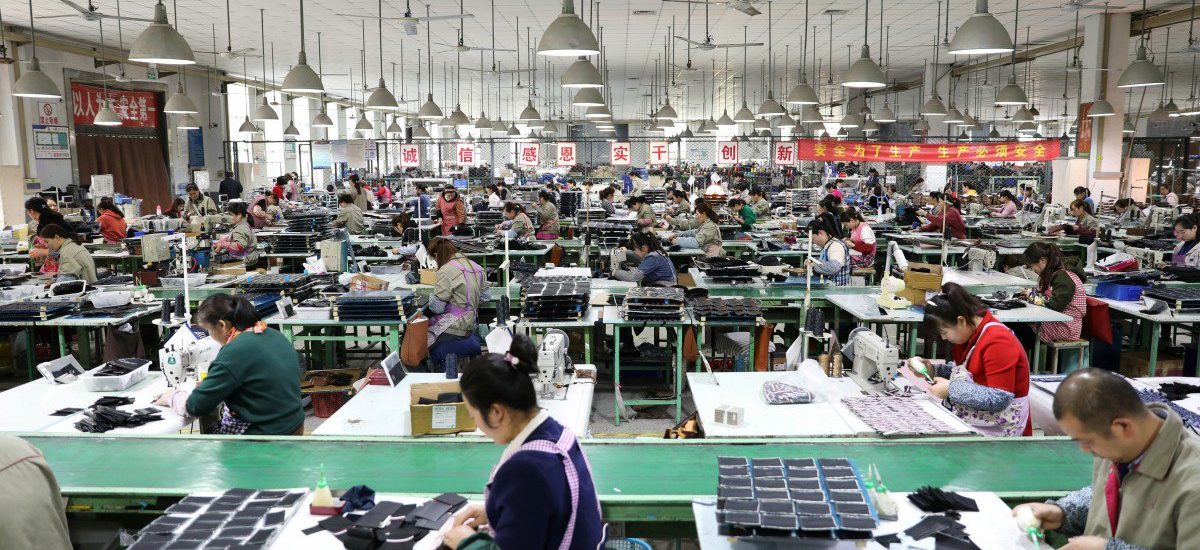China’s services sector accelerates in March as manufacturing also sees upturn

-
Official non-manufacturing purchasing managers’ index rises 0.5 points from February to 54.8
-
Manufacturing gauge returns to positive territory after gaining 1.3 points from previous month, its biggest increase for seven years
He Huifeng. Published: 10:21am, 31 Mar, 2019
Updated: 9:25am, 1 Apr, 2019
He Huifeng – He Huifeng is an award-winning journalist and has been focusing on mainland news reporting since 2001 for several overseas media. She has gained an in-depth knowledge of political, economic and social issues on the mainland through years of close observation, which has given her a love for journalism in the field.
Published: 10:21am, 31 Mar, 2019
China’s services industry saw faster growth in March, while manufacturing activity also recovered, according to figures released on Sunday.
The official non-manufacturing purchasing managers’ index (PMI), which covers the services and construction sectors, rose 0.5 points from February to 54.8, to remain well above the 50-point mark that separates growth from contraction.
The services sector accounts for more than half of China’s economy and has helped soften the impact of a manufacturing downturn. Growth slowed late last year, however, amid a cooling property market and faltering consumer demand for everything from cars to mobile phones.
After three months in decline, China’s official manufacturing PMI picked up in March, rising 1.3 points from February to 50.5. The monthly gain was the greatest since February 2012 and came after Beijing announced it would introduce tax cuts to help struggling manufacturers.
Meanwhile, the composite PMI, which covers both manufacturing and services activity, rose to 54 points in March, from 52.4 a month earlier.
A sub-index for factory output grew at its fastest pace in six months in March, reversing a brief contraction in February. It rose 3.2 points to 52.7, its highest level since September. Another sub-index, for new orders, rose one point month on month in March to 51.6.
After trade negotiators succeeded in delaying the imposition of new US tariffs on Chinese goods, China’s new export orders index rose 1.9 points to 47.1 in March from a 10-year low in February, though the figure remained in contraction territory.
Ding Shuang, chief Greater China economist at Standard Chartered Bank, said the latest PMI figures suggested Beijing’s stimulus policies were starting to take effect.
“In particular, the production PMI has rebounded relatively quickly, showing that the tax reduction policy in support of manufacturing has worked.”
Earlier this month Beijing announced massive tax cuts
to shore up manufacturing and other sectors, as well as increased public spending on housing and infrastructure development.
From Monday, the value-added tax rate for manufacturing firms will fall to 13 per cent from 16 per cent, while the rate for transport and construction firms will drop by a point to 9 per cent.
On the monetary front, the People’s Bank of China twice reduced lenders’ required reserve ratio in January – by half a percentage point each time – adding 1.5 trillion yuan (US$223.06 billion) to the banking system, much of which was intended for private sector firms and small businesses.
Ding said an increase in investment by local authorities had also helped activity in the construction industry, which swung back into high gear in March, rising 2.5 points from February to 61.7.
Both Ding and Shen Jianguang, chief economist at JD Digits, a unit of Chinese e-commerce firm JD.com, said they had expected the first quarter of 2019 to be a difficult period for China’s economy, but forecast an upturn in the second and third quarters.
If there was such an improvement, Beijing would likely reduce its stimulus spending, Shen said.
“I think the central authorities will review infrastructure and housing investment in the second half of the year, as too aggressive a policy could result in inflation and a rebound in property prices,” he said.
I think the central authorities will review infrastructure and housing investment in the second half of the year, as too aggressive a policy could result in inflation and a rebound in property prices. Shen Jianguang
Ding agreed, suggesting Beijing would review its spending plans in line with how well the trade talks went.
“If in June or July, the situation regarding the trade war is looking more positive, adjustments could be made as the biggest economic uncertainty would have been ruled out,” he said.
Meanwhile, the employment indexes for both the manufacturing and non-manufacturing sectors rose 0.1 points in March, to 47.6 and 48.7 respectively.
To help employment, Beijing said it would reduce the contribution employers have to make to the state pension scheme for workers to 16 per cent from the current 19 or 20 per cent.
